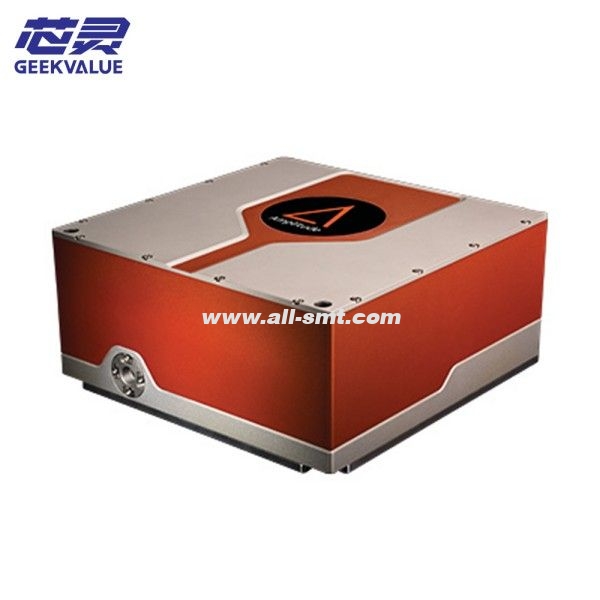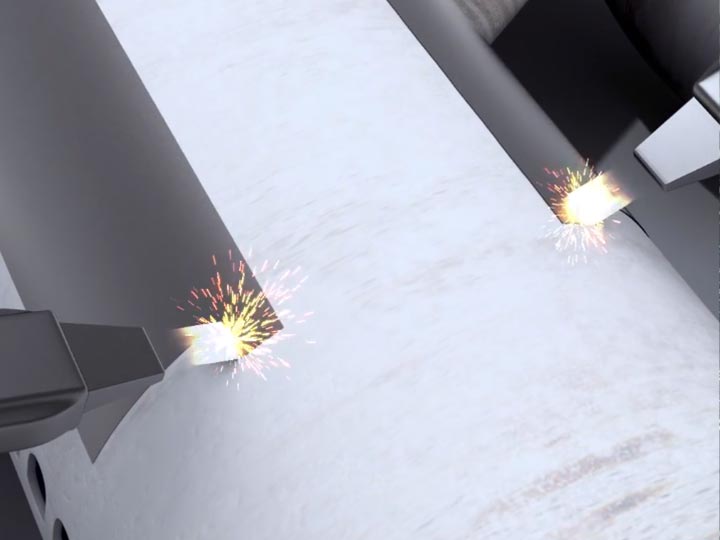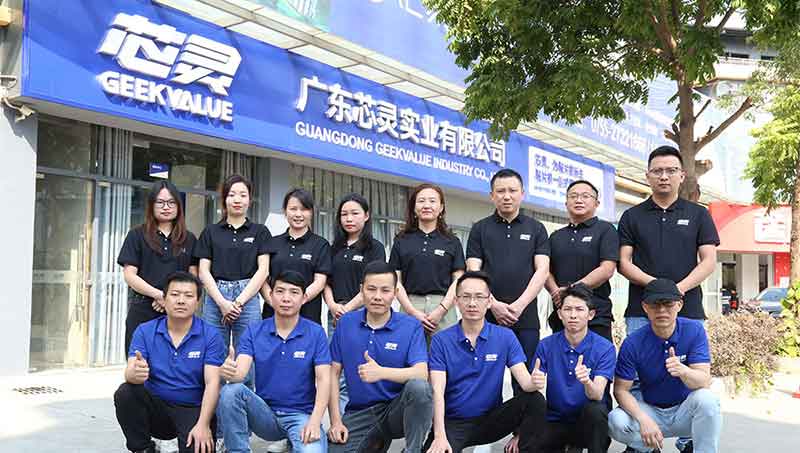Femtosekundový laser vyzařuje ultrakrátké světelné pulzy, z nichž každý trvá pouze jednu kvadriliontinu sekundy (10^-15 sekund). Tato neuvěřitelně krátká doba trvání umožňuje přesné zpracování materiálu s minimálním tepelným poškozením, což činífemtosekundové laseryneocenitelné v různých vysoce přesných aplikacích.

Jak fungují femtosekundové lasery?
Femtosekundové lasery fungují na principu generování ultrakrátkých pulzů pomocí procesu zvaného synchronizace módů, kde se kombinuje více světelných frekvencí a vytváří se jediný pulz s vysokou intenzitou. Tyto pulzy interagují s materiály prostřednictvím nelineárních absorpčních procesů, což umožňuje přesnou ablaci bez významné difúze tepla.
Klíčové komponenty femtosekundového laserového systému
Zisk středníTypicky titanem dopovaný safír (Ti
) krystal nebo yterbiem dopované vlákno, které zesiluje laserové světlo.
Mechanismus uzamčení režimuZajišťuje generování ultrakrátkých pulzů.
Pulzní kompresorZkracuje dobu trvání pulzu na femtosekundový rozsah.
Systém dodávání paprskůSměruje laserové pulzy s vysokou přesností na cílový materiál.
Výhody ultrarychlých pulzů
Minimální tepelné poškozeníUltrakrátká doba trvání pulzu omezuje ukládání energie na malý objem, čímž se zmenšují tepelně ovlivněné zóny.
Vysoká přesnostUmožňuje mikroobrábění a nanoměřítky.
VšestrannostÚčinný na širokou škálu materiálů, včetně kovů, polymerů a biologických tkání.
Femtosekundové vs. pikosekundové a nanosekundové lasery
Pochopení rozdílů mezi femtosekundovými, pikosekundovými a nanosekundovými lasery je klíčové pro výběr vhodné technologie pro konkrétní aplikace.

Porovnání trvání pulzu
Femtosekundové lasery: 10^-15 sekund
Pikosekundové lasery: 10^-12 sekund
Nanosekundové lasery: 10^-9 sekund
Dopad na zpracování materiálu
Femtosekundové laseryNabízí nejvyšší přesnost se zanedbatelnými tepelnými účinky, ideální pro choulostivé materiály a aplikace vyžadující extrémní přesnost.
Pikosekundové laseryPoskytují rovnováhu mezi přesností a rychlostí zpracování, vhodné pro mikroobráběcí úkoly.
Nanosekundové laseryCenově výhodnější pro odstraňování sypkého materiálu, ale může způsobit značné tepelné poškození.
Vhodnost aplikace
FemtosekundaOční chirurgie, výroba mikroelektroniky a vysoce přesné mikroobrábění.
PikosekundaGravírování, značení a některé lékařské aplikace.
NanosekundaSvařování, řezání a všeobecné zpracování materiálů.
Průmyslové a lékařské aplikace femtosekundových laserů
Femtosekundové lasery způsobily revoluci v mnoha odvětvích díky své bezkonkurenční přesnosti a minimálnímu tepelnému dopadu.
Lékařské aplikace
OftalmologiePoužívá se při operacích LASIK a šedého zákalu pro přesné řezy rohovky, což zlepšuje výsledky léčby pacientů.
NeurochirurgieUmožňuje minimálně invazivní zákroky se sníženým vedlejším poškozením.
Dermatologie: Usnadňuje omlazení pleti a ošetření jizev s vysokou přesností.
Výroba mikroelektroniky a polovodičů
Vzorování obvodůUmožňuje vytváření složitých vzorů na polovodičových destičkách.
Mikroelektromechanické systémy (MEMS)Umožňuje výrobu složitých mikrostruktur nezbytných pro senzory a akční členy.
Letecký a automobilový průmysl
Výroba součástekPoužívá se pro vrtání a řezání vysoce pevných materiálů, jako jsou titanové slitiny, s minimální tepelnou deformací.
Texturování povrchuZlepšuje adhezní a třecí vlastnosti součástí.
Hodinářství a šperky
Přesné gravírováníVytváří složité vzory na cifernících hodinek a špercích.
Zpracování materiáluZvládá jemné materiály, jako je perleť, aniž by je poškodil.
Vědecký výzkum
Ultrarychlá spektroskopieStuduje rychlé chemické reakce a dynamiku elektronů.
Kvantové výpočtyManipuluje s qubity s vysokou přesností pro zpracování informací.
Úvahy o nákladech a údržbě
Femtosekundové lasery sice nabízejí řadu výhod, ale zároveň s sebou nesou vyšší náklady a požadavky na údržbu.
Počáteční investice
Cena femtosekundových laserových systémů se může pohybovat od 100 000 do více než 500 000 dolarů, v závislosti na specifikacích a možnostech.
Provozní náklady
ÚdržbaVyžaduje pravidelný servis pro zajištění optimálního výkonu.
Spotřební materiálSoučásti jako laserové krystaly a optika mohou vyžadovat pravidelnou výměnu.
VýcvikObsluha musí být dostatečně proškolena k bezpečné manipulaci se systémem a jeho údržbě.
Opravy a servis
Vzhledem ke složitosti femtosekundových laserů by opravy měly provádět zkušení odborníci. Mezi běžné úkony údržby patří:
Zarovnání paprskuZajištění správného vyrovnání laserového paprsku pro přesný provoz.
Výměna optických komponentVýměna opotřebovaných čoček nebo zrcadel.
Aktualizace softwaruUdržování řídicího softwaru v aktuálním stavu pro zachování kompatibility a výkonu.
Odborná podpora pro údržbu femtosekundových laserů
Femtosekundové lasery představují vrchol ultrarychlé laserové technologie a poskytují bezkonkurenční přesnost, minimální tepelné poškození a široký aplikační potenciál v různých odvětvích. Jejich pokročilá konstrukce však také znamená, že pro zajištění dlouhé životnosti a konzistentního výkonu je zásadní řádná údržba a odborná podpora.

NaGEEKVALUE, specializujeme se naopravy, údržba a servis špičkových laserových systémů, včetně femtosekundových laserů. Ať už se potýkáte s problémy s nastavením paprsku, nestabilitou pulzu nebo degradací součástí, náš tým zkušených inženýrů je vybaven k tomu, aby vám poskytlrychlá, spolehlivá a cenově výhodná řešeníChápeme naléhavost minimalizace prostojů, a proto nabízíme:
✅ Rychlá diagnostická reakce a opravy na místě
✅ Dodávka a výměna originálních dílů
✅ Dlouhodobé servisní smlouvy a optimalizace výkonu
✅ Technické konzultace pro upgrady a integraci systémů
Pokud používáte nebo plánujete investovat do femtosekundového laserového zařízení, důvěřujte společnosti GEEKVALUE jako spolehlivému poskytovateli poprodejních služeb.Kontaktujte nás ještě dnesa dozvíte se více o tom, jak můžeme podpořit výkon a spolehlivost vašeho laserového systému.

